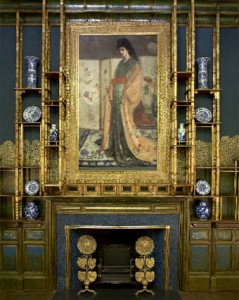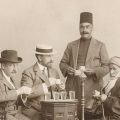Freer Gallery is among those featured in Google Art Project
(Image: Detail from Botticelli’s “The Birth of Venus”)
The Smithsonian’s Freer Gallery of Art is one of 17 museums worldwide featured in Google’s Art Project. The project combines some of the world’s great art collections with Google technologies, enabling people to virtually stroll the halls of Versailles, study objects in the Hermitage or gaze at Van Gogh’s “Starry Night” and other works in stunning gigapixel detail.
Along with the Freer, participating museums in the United States include The Metropolitan Museum of Art, The Frick Collection and MoMA: The Museum of Modern Art. Also participating are Alte Nationalgalerie and Gemäldegalerie in Berlin; Museo Reina Sofia and Museo Thyssen-Bornemisza in Madrid; Museum Kampa in Prague; The National Gallery and Tate Britain in London; Palace of Versailles in France; Rijksmuseum and Van Gogh Museum in Amsterdam; The State Hermitage Museum in St Petersburg; State Tretyakov Gallery in Moscow; and the Uffizi Gallery in Florence.
Each of the museums has worked in extensive collaboration with Google—from choosing collections to highlight and advising on the best angle to capture photos, to selecting information to accompany the artworks. The project entailed taking super-high-resolution images of famous artworks and collating more than a thousand other images. It also involved using Street View Indoor technology to capture 6,000 panoramas, which were built into 360-degree tours of individual galleries. There are 486 artists, 1,061 artworks and 385 gallery rooms in total. Artworks range from ancient to contemporary—from Botticelli’s “Birth of Venus” to Chris Offili’s “No Woman, No Cry.” The project also features Byzantine iconography, the ceilings of Versailles, ancient Egyptian temples and a collection of Whistlers and Rembrandts from all over the world.
The Freer contributed 100 images of works from its collections of Asian and American art, which span 6,000 years and many cultures, reflecting the taste of the gallery’s founder, Charles Lang Freer (1856-1919). To capture its unique spirit, Google technicians employed gigapixel imaging to delve into the details of American artist James McNeill Whistler’s painting “The Princess from the Land of Porcelain.” This work hangs above the mantel in Whistler’s iconic work of Asian-inspired art at the Freer, the Peacock Room. Both the painting and the room embody the Freer’s mission to illuminate points of contact between Western and Asian artistic traditions.
“The gigapixel experience brings us very close to the essence of the artist through detail that simply can’t be seen in the gallery itself,” said Julian Raby, director of the Freer Gallery of Art and Arthur M. Sackler Gallery. “Far from eliminating the necessity of seeing artworks in person, Art Project deepens our desire to go in search of the real thing.”
“The past 20 years have transformed and democratized the world of art—with better access to museums in many countries and a proliferation of public artworks,” said Nelson Mattos, vice president of engineering at Google. “We’re delighted to have been able to collaborate with leading art museums around the world to create this state-of-the-art technology. We hope it will inspire ever more people, wherever they live, to access and explore art—in new and amazing levels of detail.”
An Indoor Street View feature enables visitors to move around the galleries virtually, selecting works of art that interest them, clicking to discover more or diving into the high-resolution images. “Info” panels supply information about artworks and invite visitors to find more works by a particular artist and watch related YouTube videos.
Each of the 17 museums selected one artwork to be photographed in extraordinary detail, using super-high-resolution or gigapixel photo-capturing technology. Each gigapixel image contains around 7 billion pixels, enabling the viewer to study details of the brushwork and patina beyond that possible with the unaided eye. Hard-to-see details suddenly become clear, such as the tiny Latin couplet that appears in Hans Holbein the Younger’s “The Merchant Georg Gisze.” Or the people hidden behind the tree in Aleksander Ivanov’s “The Apparition of Christ to the People.”
In addition, museums provided images for a selection totalling more than 1,000 works of art. The resolution of these images, combined with a custom-built zoom viewer, allows viewers to discover minute aspects of paintings they might never have seen up close before, such as the miniaturized people in the river of El Greco’s “View of Toledo” or individual dots in Georges Seurat’s “Grandcamp, Evening.”
The “Create an Artwork Collection” feature allows users to save specific views of any of the artworks and build their own personalized collection. Comments can be added to each painting, and the whole collection can be shared with friends and family or students working on collaborative projects or collections.
Google is pursuing plans to expand Art Project to include more museum partners, a task that will be undertaken by engineers and product managers at the recently announced Google European Cultural Centre.
Google Art Project can be found at googleartproject.com and at the Freer Gallery of Art website: www.asia.si.edu.
Posted: 8 February 2011
-
Categories:
Art and Design , Asian Art Museum , Education, Access & Outreach , Feature Stories











